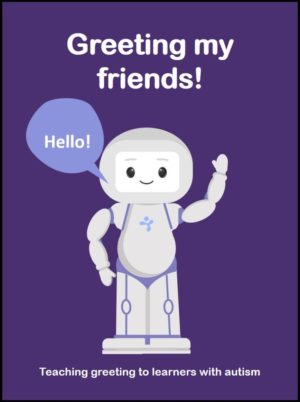Conversation is an interactive communication between two or more people. Developing conversational skills is one of the first steps in socialization.
For many of us, conversational skills have developed effortlessly. Usually, we unconsciously use our body to convey messages and keeping eye contact while having a discussion is not an issue.
However, for many children with autism spectrum disorder, all these details in social interaction can be confusing and frustrating. Difficulties in initiating and maintaining conversations often prohibit children with autism from developing friendship and hinder their performance in school. From time to time, people consider children with autism reluctant to engage with others. But in reality, lack of socialization is often the outcome of their insufficient social and communicational skills, rather than lack of interest.
Even though the communicational ability doesn’t develop naturally in children with ASD, but it is still possible to use various strategies to improve their conversational skills and confidence. In order to successfully engage in conversation with others, children with autism should learn various components of conversation, including:
- Initiating a dialogue
- Choosing a topic
- Taking turns in a conversation
- Being able to ask and reply to questions
- Ceasing a conversation appropriately
In this blog post, we focus on useful methodologies that can be implemented in teaching children how to initiate a conversation.
Steps into teaching conversation initiation:
– Always pick a topic that is interesting for the child:
Often each child has a favourite toy, animated character or superhero. Try to choose a topic that is attractive for the child to provoke engagement in the discussion.
– Use conversational starters:
Conversational starters are practical tools to prepare children for initiating a conversation with others, providing useful cues over a variety of potential topics. A great example of conversation starters is a conversational map. In the maps by using a visual presentation, a framework will be presented to the child which covers various topics of interest, scripted possible initiations.
– Use social stories:
Social Story is an effective tool to help individuals on the autism spectrum disorder to have a better understanding of different situations and help children to interact and behave in an appropriate manner. Social stories model the appropriate social interaction by describing a situation with relevant social cues, other’s perspectives, and a suggested appropriate response.
Below you find free downloadable material to teach greetings with the help of social stories. Here are some more tips for teaching conversation using social stories.
– Use video modelling:
In video modelling, you demonstrate a person modelling proper social behaviour and help the child to imitate the behaviour. Here is a video modelling example designed for conversational skills.
– Role play:
One of the best ways to help children with autism to learn communicational and social skills is to practice these skills in an imaginary scenario. During the role playing, you can be an imaginary character and the child can practice conversational skills with you as they have learned through conversation starter or video modelling. To role play:
- Try to play the role of a person or a character who is interesting and engaging for the child.
- Try to choose a topic that the child is interested in. Also, in the beginning, pick a topic that the child already has information about, so he can comfortably participate in the discussion. For example, you can say I saw that you have a Spiderman T-shirt. Do you like Spiderman?
- To role-play always ask open-ended questions, so you can ask more questions afterwards.
– Positive Reinforcement:
Reinforcements are the foundation of the learning process in a child with autism. Positive reinforcement helps the child to learn which behaviours are appropriate and favourable. Giving positive reinforcement is also important to create a fun and motivating environment for the child.
In the next blog post, we will focus on how to use conversation starters to help children with autism improve their communicational skills.
QTrobot social skills Curriculum:
QTrobot social skills curriculum has several units focused on various conversation related abilities, including how to greet people and how to start a conversation, how to maintain a conversation, how to stay on the topic, and how to finish a conversation properly. You can find all the information about the curriculum from the link below:







